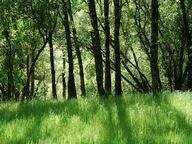Quiz Answer Key and Fun Facts
1. The very last tree bearing a particular cultivar of what fruit was found at the remnants of an orchard on Bardsey Island, Wales?
2. Rediscovered on a remote cliff, the type specimen of the Gibraltar campion resides in what famous gardens?
3. Early explorers found that the St Helena redwood was quite useful for what purpose?
4. Wood's cycad is somewhat tricky to propagate because the only wild individual ever discovered is what?
5. The only wild Three Kings kaikomako ever observed was discovered in 1945 while ridding Three Kings Islands of what pest that destroyed the rest of its kind?
6. Small numbers of Wollemi pines often grow from a dead Wollemi pine trunk in a phenomenon known as what?
7. The unique café marron is endemic to a small section of Rodrigues on what tiny island nation in the Indian Ocean?
8. A tiny water lily native to Rwanda made headlines when one was stolen from Kew by a person who dug it out of what?
9. Only a few living branches exist of Cooke's koki'o, and these are kept alive by what horticultural technique?
10. The only reason that the Judean date palm lived into the 21st Century was due to seeds recovered from the palace of what biblical psychopath?
Source: Author
nautilator
This quiz was reviewed by FunTrivia editor
rossian before going online.
Any errors found in FunTrivia content are routinely corrected through our feedback system.

